A Hawker Siddeley Trident cockpit experience – Jet Age Museum style

The Gloucestershire Aviation Collection’s Jet Age Museum (JAM) is known for its collection of restored military aircraft with connections to Gloucestershire’s aerospace industry. But look closer among the Gloster Meteors, Javelin, E28/39 and others and you’ll notice the front section of a 1970s BEA/British Airways HS-121 Trident 3B airliner. G-AWZU stands proudly in the museum grounds, next to the boundary with Gloucestershire Airport. She represents a key piece of Gloucestershire, British and world aviation history. Through our Jet Set Journey cockpit experience, you can step back in time to experience the world’s first commercial airliner with the blind landing capability that allowed it to land in fog. This pioneering technology was the locally developed and manufactured Smiths Industries Trident Autoland System…
Access to the painstakingly restored front cabin and cockpit of our beloved G-AWZU is only possible thanks to the efforts of a dedicated volunteer team. The scope of the work involved is clear from the following picture of the pre-restoration cockpit.

Several volunteers were even involved with the Trident 3B and its innovative autolanding system while the airliner was in service. Visit the Jet Age Museum and you could meet some of them as they welcome you to the interactive Trident 3B cockpit experience. And as they show you around G-AWZU’s cabin and take you onto what was, back in the 1970s, a state-of-the art airliner flight deck. (Of course, Trident experts will quickly spot the differences between this example and earlier Trident cockpits.)
Meet the museum’s ‘Mr. Trident’
If any Jet Age Museum volunteer deserves the nickname ‘Mr. Trident’, it’s got to be Dave West. He’s been involved with the project since G-AWZU was craned off a low-loader and positioned in the museum grounds in 2013.
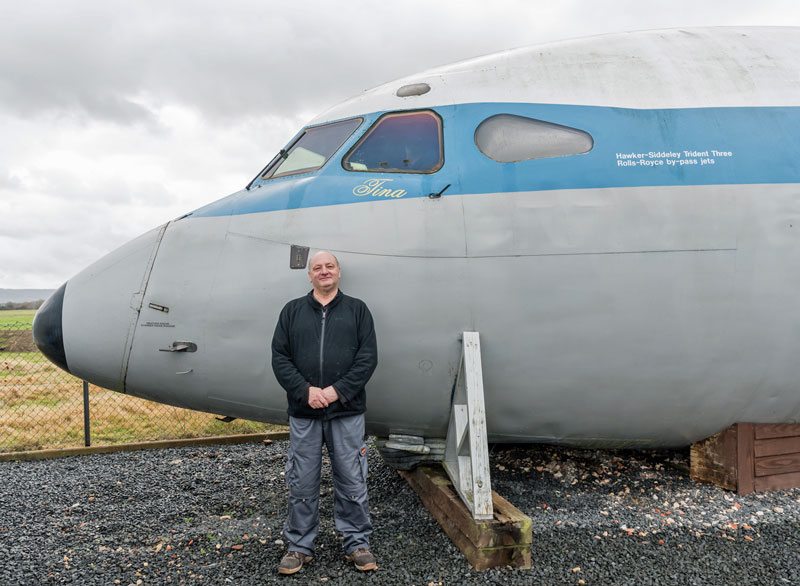
Dave says: ‘G-AWZU served BEA and British Airways between 1972 and New Year’s Eve 1985 when she completed her final revenue service flight (BA charter flight BA9198C) from Amsterdam to London Heathrow. A couple of months later, in March 1986, she made her final positioning flight to Stansted airport. Once there, she was used for pushback and cabin evacuation ground training; later, for BAA fire service training duties before being scrapped in 2003.
‘An interesting YouTube video, End of a Trident, records the drama of that event as G-AWZU fought to the last! We later bought the nose section from GJD Tech at Bruntingthorpe Aerodrome. By 2015, we’d raised the funds to start work on restoring our acquisition. The rest is Jet Age Museum history. Today, whether we’re adding the last few elusive period instruments, replacing seat covers or restoring the foam on pilots’ windows, we’re still working on our beloved Trident. G-AWZU is among our most popular exhibits. She delivers a fantastic cockpit experience for young and old, the general public and hard-core airliner enthusiasts alike.’
Preserving the past and inspiring the future
Having such an accessible Trident 3B cabin and cockpit combo epitomises the Jet Age Museum’s ‘Preserve the Past and Inspire the Future’ philosophy.

June 2023 marks the golden fiftieth anniversary of G-AWZU’s first flight on Wednesday 28 June 1972. It was a time when Nixon, Heath and Kosygin starred in world politics. Don McLean’s ‘Vincent’ topped the UK music charts. And our beloved ‘Ground Gripper’ first took off from De Havilland’s Hatfield, UK, factory before delivery to BEA – later British Airways – a few weeks later.
No wonder G-AWZU offers such a wonderfully immersive 1970s experience if you want to visit a Trident cockpit and see authentic period details such as the aircraft’s moving map display. Visiting her evokes the magic of the world’s first T-tail, triple-rear-engine (four-if you include the Trident 3B’s Rolls-Royce RB 162-86 booster engine added to help with take-off and initial climb) turbojet airliner.

For today’s youngsters, who may be about to make their first flight, G-AWZU offers a great opportunity to visit an airliner cabin and cockpit. In-flight airliner cockpit visits were banned after 9/11. Our Trident open cockpit means youngsters can compare 1960s aerospace engineering with the ‘glass cockpit and fly-by-wire’ technology they’ll see if they visit the latest Airbus or Boeing flight deck after a modern flight. Maybe, getting up close and personal with our Trident airliner nose section, and pioneering period technology such as the triplex pitch control module of the autoland system, will inspire a career in aviation.

Who knows, the girl or boy who visits our cockpit experience could one day develop pioneering avionics for a new generation of electric airliners? It could happen!
Trident’s pioneering airliner technology
So the HS-121Trident 3B – now lovingly named Tina – represents pioneering airliner technology from over half a century ago. To put this in perspective, when the Wright Brothers’ Kitty Hawk flew in 1903, it preceded the Trident’s first flight (January 1962) by a period similar to that which has passed since then. Consider Kitty Hawk’s pioneering 120 ft. (37 m) flight lasting just 12 seconds, and the nearly-10,000-mile (16,093 km) scheduled passenger flights made by today’s airliners.
The Smiths Industries Trident Autoland System
Our Trident represents the midpoint of that development. She’s a very significant aircraft, made all the more important by the locally designed and made autolanding system. You’ll learn more about this during your Trident flight deck experience.

Jet Age Museum volunteer Steve Williams (who also took the photographs for this article) was on the Smiths Industries team responsible for the Hawker Siddeley Trident blind landing system. Steve explains: ‘The avionics were very advanced for the time. A key part of these systems was the triplex – three-way redundancy – blind landing system. The Smiths Industries Trident Autoland System (part of the SEP.5 autopilot system) enabled the aircraft to land in the lowest visibility. With three parallel lanes of computing – hence ‘triplex’ – it was genuinely leading edge for its time. It speaks volumes that Smiths were entrusted with developing the first such system for a commercial aircraft. What’s more, it all happened ‘just down the road’ from the museum! I’m not the only JAM volunteer with direct Trident experience. Tony Mackinnon was on G-AWZU’s last commercial flight. And Mike Dempsey’s wife was involved with dispatching new and repaired Trident autoland system components from Smiths.’

‘There’s an interesting fact about the Trident’s offset nose wheel,’ explains Steve. ‘Many people mistakenly think it was designed so the nose wheel didn’t engage with runway lighting. In fact, the offset nose wheel, with its sideways retraction at right angles to the aircraft’s longitudinal axis, allowed the large avionics bay needed to house the bulky 1960s avionics. That offset has caught out at least one filmmaker, and annoyed Trident fans, when reversed video has wrongly shown the nose wheel on a Trident’s starboard side.’
JAM’s aviation film star
While we’re on the subject of film, Trident G-AWZU even enjoyed a moment of TV fame when she appeared in an episode 1.04 (‘Grasser’) of popular Granada TV series Travelling Man from 28 November 1984.

When you visit, your own moment of Trident fame begins at our Trident exhibit ticket desk. Michael Tighe (right) and Alasdair May (left) are two of the volunteers who regularly support our Trident 3 cockpit experience. ‘As the Trident team,’ Michael explains, ‘we were able to reopen the cockpit experience before the neighbouring Vulcan’s because of the airliner’s roominess compared to the cramped V-bomber flight deck. Up to six visitors at a time take part in each tour. Our Jet Set Journey allows you to take a nostalgic journey and walk in the footsteps of the flight crew, business people, celebrities and holidaymakers who flew in G-AWZU during her service life.’
Each guided tour lasts around 30 minutes. Jet Age Museum visitors who opt for this experience enjoy a short video presentation while seated in the front cabin, followed by a flight deck visit. Because of the limited numbers that can simultaneously visit G-AWZU, admission is by ticket only. The free tickets are available from the Trident desk located in the museum’s main hall.
Trident questions and reminiscences encouraged
When it’s time for your tour, a trained volunteer will escort you out to G-AWZU, which is accessible via a short flight of steps. Naturally, questions and Trident reminiscences are always welcome. As are donations to help with Tina’s continuing restoration!’

Dave West again: ‘Our Trident cockpit includes most of the original instrumentation and other fittings. Some came with G-AWZU when we bought her. Other items have been painstakingly sourced during thousands of hours of restoration. However, we’re still on the lookout for some instruments – including two Smiths cockpit stopwatches…’

‘Other Trident bits are no longer available,’ Dave explains, ‘which presents a huge problem if they’re removed or damaged. In a couple of cases, 3D printing has enabled us to faithfully reproduce panel items. Others, such as G-AWZU’s cockpit panel fuses (shown above), are irreplaceable if lost or damaged. That’s why we have a strict no-touch rule for these!’
Your chance to go inside a Trident airliner
Jet Age Museum’s Rob Hepple is another enthusiastic volunteer who leads tours around the Trident’s cabin and cockpit. He says: ‘The Hawker Siddeley Trident cockpit exhibit is a consistently popular attraction at Staverton. Admirers range from excited toddlers who haven’t yet taken their first flight, to former pilots, such as Peter Lewis, who flew G-AWZU while she was in service and officially opened the exhibit.’

Sadly, others’ interest in the display goes too far and some items have proved irresistible to light-fingered visitors over the years. In particular, light-fingered visitors have taken several rare cabin safety cards from G-AWZU’s seatback pockets. It’s a sad reflection of the times we live in…’
Our Trident cockpit visit gets people thinking
If there’s one thing G-AWZU always manages to do, it’s to get visitors thinking about aviation past and present. For starters, visiting the Jet Age Trident soon shows that airliner cockpits aren’t as claustrophobic as many people imagine. Then there’s the frozen-in-time look of the 1970s-era cabin leaflets and in-flight magazines that contrast so remarkably with modern publications.

On the flight deck, visitors can see the Trident’s Para-Visual Display (PVD). This ingenious feature helped pilots keep G-AWZU centred on the runway after another blind landing in ICAO CAT III conditions. And, of course, the bright red ‘tiger’s tail’ stall recovery override lever on the port side of the central control pedestal.

It’s little details like these, the genuine DME torch and the authentic cockpit emergency axe, that make your Trident flight deck visit so unforgettable and deliver such a memorable trip down aviation’s memory lane.
Trident:’ the ultimate sports car’ of its time
Former pilots have described the Hawker Siddeley Trident as ‘the ultimate sports car of the time’. None of the jets remain in airline service, or even flying, which makes access to an authentic front cabin and cockpit even more appealing. Next add the unquestionable historical importance of the world’s first T-tail, rear-engine, three-engined airliner. And the avionics significance of the Smiths Industries Trident Autoland System so clearly signalled by yellow ‘Triplex Autoland Fitted’ tags on G-AWZU’s ram’s horn control yokes…

At risk of showing his age, the present author recalls flying in Tridents – maybe even G-AWZU herself – on BA shuttle flights between Belfast and LHR in the late 1970s. Maybe you too cherish memories of long-ago Trident flights? Or perhaps you’ve never flown, or only ever flown in the latest Airbus and Boeing airliners? Either way, we’re sure you’ll love visiting Tina in Gloucestershire, UK.

Come and meet our Trident team
Coming to the Jet Age Museum is the perfect opportunity to visit a Trident airliner. When you do, look forward to meeting Dave, Steve, Mick, Rob and their colleagues, and checking in at our Trident desk for your Jet Set Journey – Gloucestershire-style. Above all, please bring your questions and your personal memories of the revered Trident – and remember to buy a model of Trident before you leave!
And, of course, if you happen to have any unwanted Trident 3B instruments or other memorabilia lying around, Dave and the rest of the team would love to have a chat…
G-AWZU, the Jet Age Museum’s Trident exhibit and flight deck experience, is at Meteor Business Park, off Cheltenham Road East, on the north side of Gloucestershire Airport. Gloucestershire, UK. For details of opening times, please visit the Jet Age Museum home page.








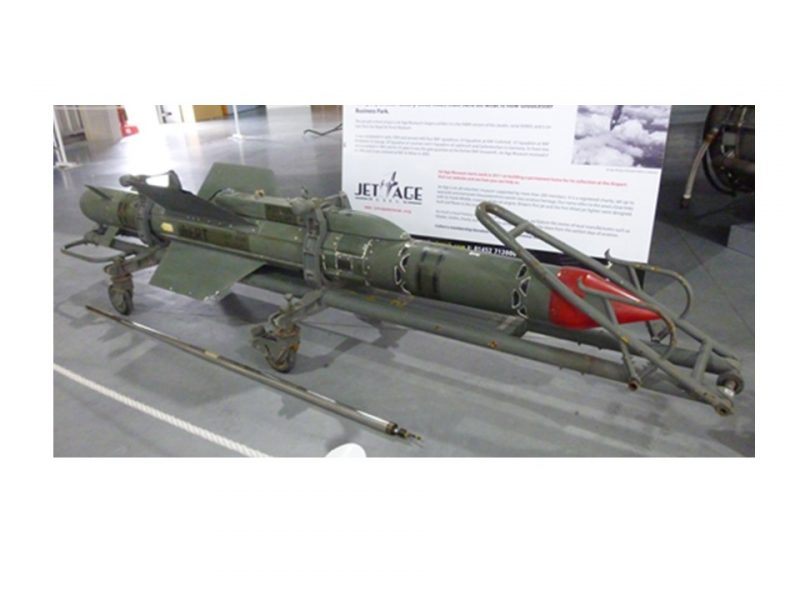


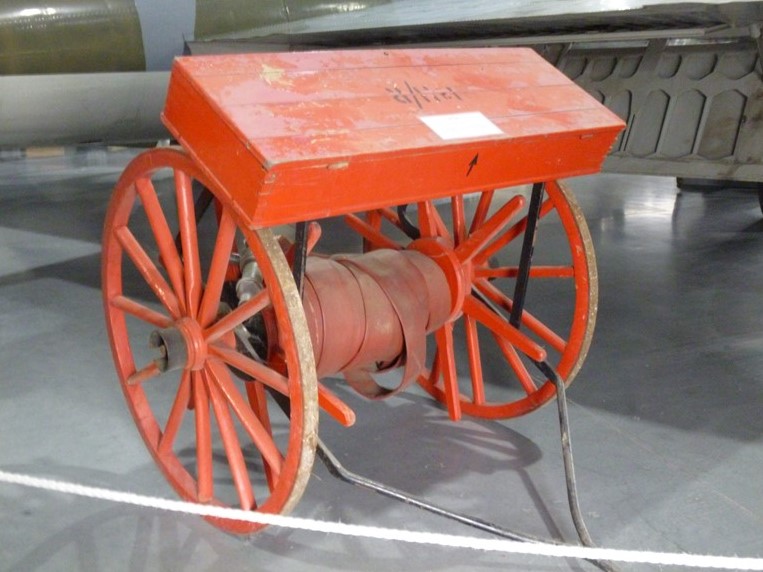
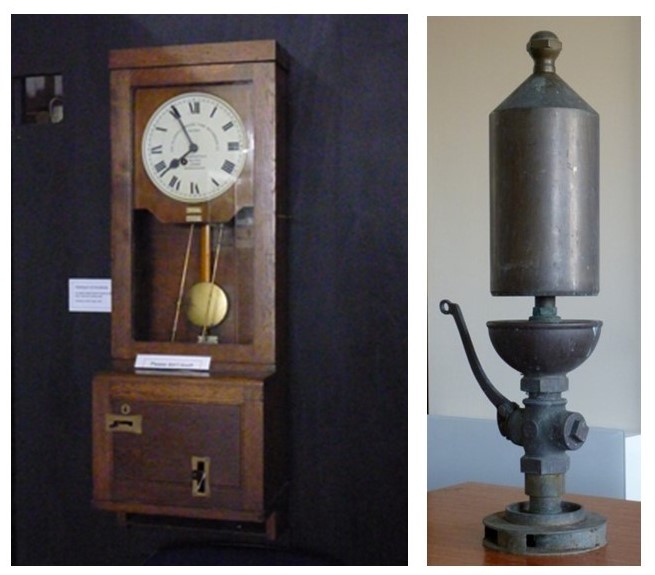
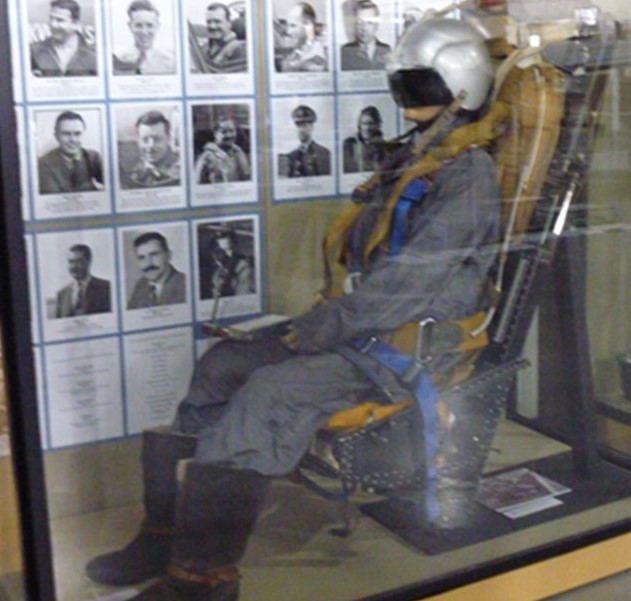
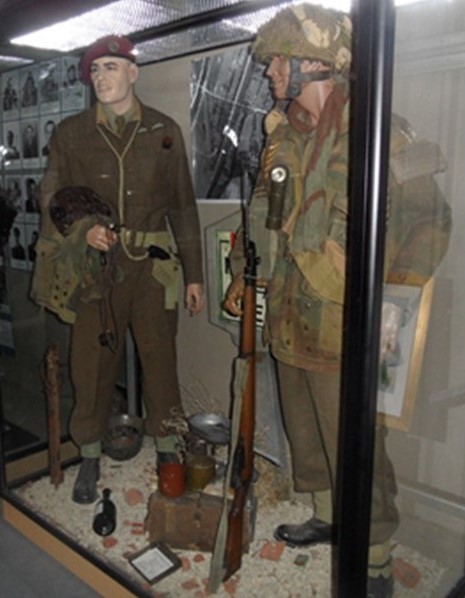
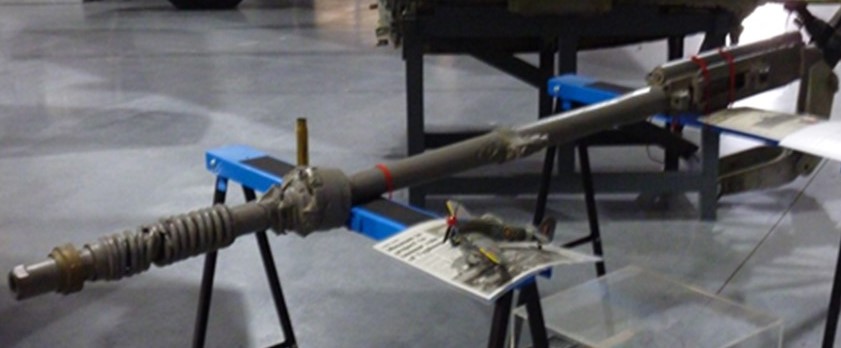
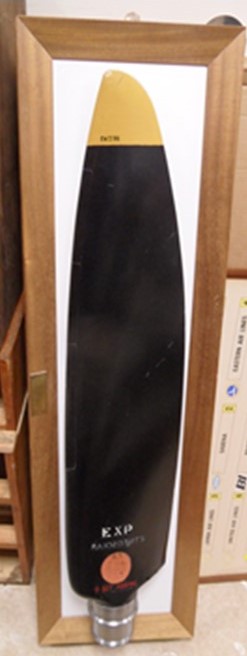










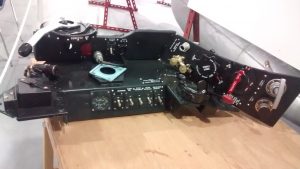
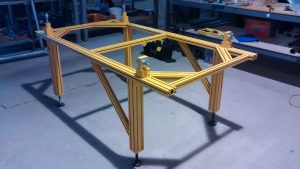
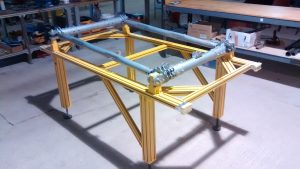
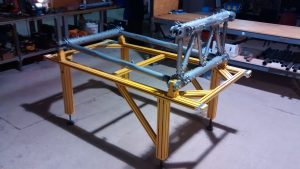
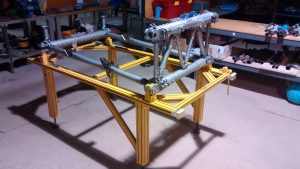
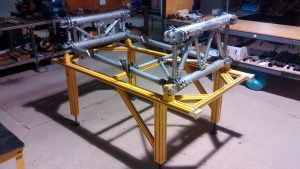
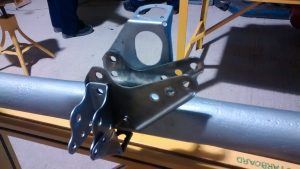
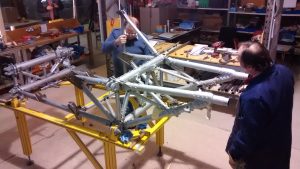
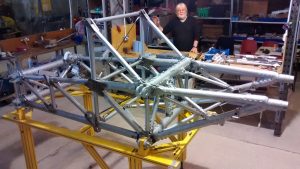
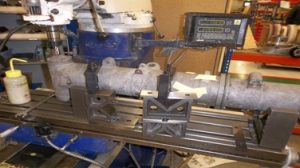
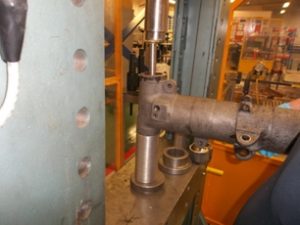
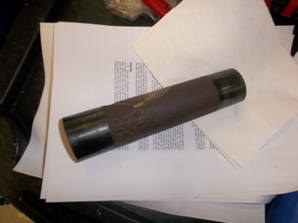











 Russell Adams’ full story is told in the lavishly illustrated Jet Age Photographer by Tim Kershaw, is published by Sutton Publishing in association with Jet Age Museum
Russell Adams’ full story is told in the lavishly illustrated Jet Age Photographer by Tim Kershaw, is published by Sutton Publishing in association with Jet Age Museum